#flocked ceramic sculptures
Explore tagged Tumblr posts
Photo

“Mossgirl with Feathers” (2016), ceramics, nylon fiber, epoxy resin, feathers, and rope.
Mossy Figures Wander Through Woodlands and City Streets in Kim Simonsson’s Flocked Ceramic Sculptures
Some of the most exciting artistic discoveries are the results of accidents or the surprising outcomes of experiments, and artist Kim Simonsson’s series Moss People is the result of one such unexpected twist. Coated with soft flocking—a process of applying very fine fiber to the surface of an object—the large-scale ceramic sculptures were initially layered only with velvety black until a few years ago, when one day, the Finnish sculptor decided to flock one of those pieces with yellow, too. Once the crushed nylon fiber was applied over the black, it turned green, and the verdant figures have since grown into a cornerstone of his practice.
All images © Kim Simonsson, shared with permission. Photos by Jefunne Gimpel

“Mossboy” (2016), ceramics, nylon fiber, epoxy resin, feathers, and rope

“Hiding Place” (2022), ceramics, nylon fiber, and epoxy resin

“Mossboy With Rock” (2017), ceramics, nylon fiber, epoxy resin, and textile

“Moss Princess” (2019), ceramics, nylon fiber, epoxy resin, and chain
#kim simonsson#artist#art#mossy figures#woodlands#city streets#flocked ceramic sculptures#sculptures#sculptor#moss people#jefunne gimpel#photographer#large-scale ceramic sculptures#finnish sculptor#crushed nylon fiber
2 notes
·
View notes
Text

Emma J. Wilson, I Wanna Hold Your Hand, Stoneware, 5” x 2.25” x 3”, 2021
#ceramics#sculpture#art#clay#absurdism#absurdart#weirdart#humans are weird#i wanna hold your hand#flocking#abstract figurative#scifiart
3 notes
·
View notes
Text

‘Faces of Sanxingdui’: Bronze Age Relics Shed Light on Mysterious Ancient Kingdom
A golden face with patinaed turquoise eyes stares out of the darkness. Illuminated around it stand three other bronze heads — some have flat tops, others round — all looked over by a giant bronze statue almost 9 feet high. All have the same piercing, angular eyes.
There’s something about the “Faces of Sanxingdui” — as this collection of sculptures is being billed — that feels both familiar and alien. Currently on display at the Hong Kong Palace Museum, they may appear Mayan or Aztec to the untrained eye, but these over-3,000-year-old sculptures weren’t unearthed anywhere near Mesoamerica’s ancient civilizations. They were discovered on China’s Chengdu Plain, at an archeological dig site called Sanxingdui (which translates as “three star mound”).
Thought to be the largest and oldest site left by the Shu kingdom, a civilization in southwestern China once only hinted at in myths and legends, Sanxingdui was not discovered until the 1920s, when a farmer stumbled across objects while digging an irrigation ditch. The site has since been found to contain the ruins of an ancient city made up of residences, sacrificial pits and tombs enclosed by high dirt walls. Archaeologists from the Sanxingdui Museum say the city was established some 4,800 to 2,800 years ago, until it was abandoned around 800 BC for unknown reasons.

The Chinese government has long promoted Sanxingdui as evidence of the country’s long, uninterrupted history — with the discoveries included in history textbooks for more than a decade. And while thousands of visitors have already flocked to the groundbreaking exhibition in Hong Kong, some analysts suggest that the items are also being used to support the Chinese government’s vision of national identity.
The mysterious and talented Shu
The Shu kingdom, which emerged in the Sichuan basin during the Bronze Age, is believed to have developed independently of the Yellow River Valley societies traditionally considered the cradle of Chinese civilization. Its inhabitants created exquisitely crafted bronze, jade, gold and ceramic objects, depicting fantastical beasts, kings, gods and shamans with bulging eyes and enlarged ears.
Around 120 of the items are currently on display in Hong Kong, and it’s the first time many of these objects, most of which were excavated between 2019 and 2022, have been showcased outside Sichuan province.

Remarkably, the sculptures predate the Terracotta Army, a collection of earthenware statues depicting the armies of China’s first emperor Qin Shi Huang, by at least 1,000 years. Wang Shengyu, an assistant curator at the Palace Museum said the objects are far more advanced, imaginative, and artistic than those being produced anywhere else in China at that time.
“You can tell that it’s very sculptural and very artsy,” Wang said at the exhibition opening, pointing to a roughly 1-foot-tall bronze figure whose fantastical, braided hair extends out to three times the height of its body and, had it not been broken, would stretch much further. “You can imagine how magnificent it was. From above his nose and all the way up, it would’ve been over 1.5 meters (4.9 feet) tall, according to the fragments (archeologists) found. The end of the pigtail is on his shoulder.”
Little is known about the Shu kingdom other than what’s been discovered on the 3.6-square-kilometer (1.4-square-mile) site outside Chengdu. There is no evidence of a written Shu language, and historical literature contains scant information about its culture other than a handful of myths and legends, including a reference to a Shu king called Can Cong whose eyes were said to have protruded — perhaps explaining why so many of the 13,000 relics recovered from the site feature bulging eyes.

After the Shu state was conquered by the Qin dynasty in 316 BC, Shu culture was “buried” under the “mainstream” culture that later emerged on China’s central plain, Chinese authorities wrote in a 2013 UNESCO submission seeking to have Sanxingdui and two nearby archeological sites recognized as World Heritage Sites. They are currently on UNESCO’s “tentative list.”
Since 1986, eight excavated pits at Sanxingdui have yielded giant masks of gods with bulbous, insect-like eyes and protruding ears, mythical creatures with gaping mouths and an almost 4-meter-tall (13-foot) bronze “tree of life” sculpture decorated with ornaments like a Christmas tree. All the items were found shattered, burned and buried, leading experts to believe the pits were used for ritual sacrifices. Some have now been painstakingly re-constructed by archaeologists. “It took 10 years to reconstruct the tree,” said Wang Shengyu, an assistant curator at the museum who helped curate the exhibition.
That tree is not on show in Hong Kong, as it is considered too precious to send abroad, but a section of one of six others discovered and ornaments are on display at the museum, as well as a 3D holographic projection of what experts think it would have looked like – its layers and branches adorned with birds, flowers, fruit, dragons, bells as well as jade and gold foil ornaments. The set are thought to have been part of a theater space.
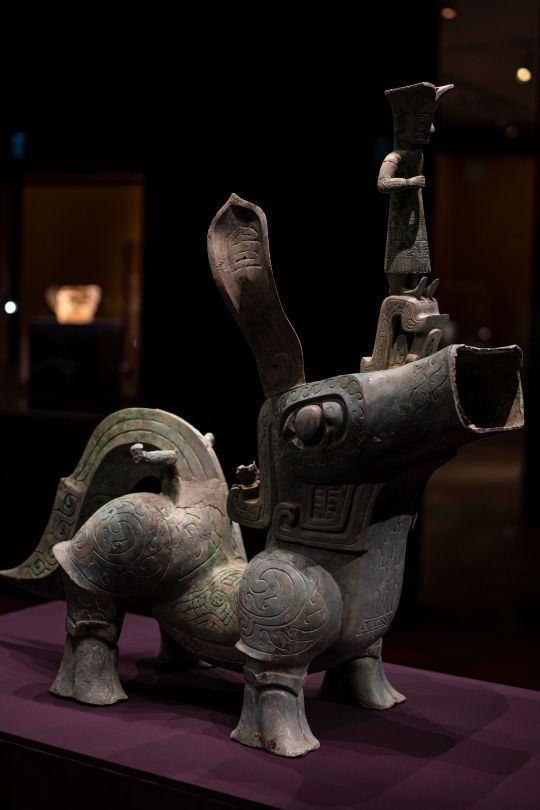
‘Historical myth’ of a continuous civilization
The exhibition places these items in the context of other ancient civilizations and includes the Shu among the many societies to have existed in the country’s “5,000-year history.” According to a press release from organizers, museum and Hong Kong government officials at the opening stressed the “continuity, inventiveness, unity, inclusiveness and emphasis on peace and harmony” of Chinese history.
Henry Tang, chairman of the governing body behind the West Kowloon Cultural District (where the Palace Museum is located) and a former candidate for Hong Kong’s top leadership role, said in a statement that the district and museum are looking to “promote cultural and artistic exchanges between China and the world, ‘tell China’s story well’, and strengthen the public’s cultural self-confidence.”
But the narrative that the Shu kingdom was innately Chinese is contentious, according to Ian Johnson, a senior fellow for China Studies at US think tank, the Council on Foreign Relations.
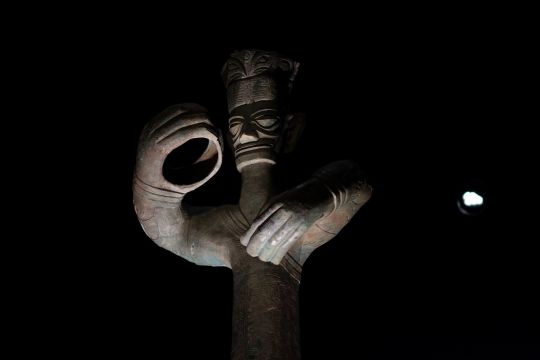
“Over the past few decades, the (Chinese Communist Party) has been trying to push a historical myth that all the peoples who have ever lived inside the current borders of the People’s Republic are ‘Chinese,’” he said over email.
“The basic idea is that the PRC (People’s Republic of China) encompasses people who naturally belong together and therefore, from today’s standpoint, form a nation. Hence any effort to have autonomy or even independence is taboo — it runs against history.”
The People’s Republic of China was established in 1949, and its government has often used China’s continuous history as evidence that ethnic groups such as the Tibetans and the Uyghurs have always belonged to China.
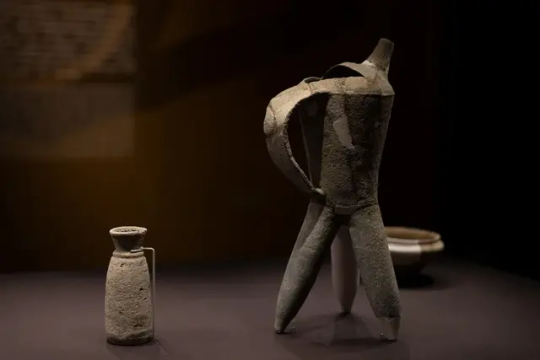
Johnson said that there was little support for the idea that civilizations along the Yellow River had much in common with those in the Sichuan Basin.
“They have commonalities but are not the same — just as ancient Assyrians and Phoenicians and Greeks weren’t the same, even if they shared certain things in common,” he said, adding: “sponsoring these kinds of exhibitions are popular and win the government credit.”
When asked to comment, the Hong Kong Palace Museum said the exhibition was “curated based on academic and archaeological research” and that it reinforces its mission to deepen audiences’ “understanding of the lives and cultures of various regions and ethnic groups as well as exchanges among them in ancient China, which have contributed to the magnificence of China’s civilization and its ‘diversity in unity’ pattern of development.”
By Christy Choi.
#‘Faces of Sanxingdui’: Bronze Age Relics Shed Light on Mysterious Ancient Kingdom#Chengdu Plain#Sanxingdui#Shu kingdom#gold artifacts#bronze artifacts#ancient artifacts#archeology#archeolgst#history#history news#ancient history#ancient culture#ancient civilizations#ancient china#ancient chinese#chinese history#chinese art#long post#long reads
33 notes
·
View notes
Text
AJ Fosik's woodwork sculpture pieces do something to me I'm unable to put into words:

"The Shepherd Inevitably Consumes the Flock", 2011

"Precious Blood, Transcendent Will" (2013)

"The Awe of the Inevitable", 2013
Beth Cavener's resin and ceramic pieces, while wildly different, invoke much the same effect:

"Kept - Variation in Cream and Grey", 2017

"Trapped," 2015
do you have any art pieces you came across you were incredibly moved by you could share with me? doesn't matter the style or the artist's other works, if it's anatomically correct or color theory compliant, if it's eons-old or you saw it accidentally online last week. i'd love to see some art that evoked feelings of any kind in you. i do not need to know the context of the subject(s) depicted so even if it's fanart of a media i don't partake in, i still wanna see it :)
239 notes
·
View notes
Text
Exploring the World of Artistic Crafts: Ceramic Classes, Korean Soy Candles, Russian Embroider
In today's fast-paced digital age, many individuals find solace in engaging with traditional crafts and artistic pursuits. From pottery classes to creating scented candles, from intricate embroidery to the plushness of velvet flocking, these artistic endeavors offer a meaningful escape from our technology-driven lives. In this article, we delve into the fascinating realms of ceramic classes, Korean soy candles, Russian embroidery, and velvet flocking. Join us on a journey through these diverse crafts and discover the joy of creating unique, handmade masterpieces.
Ceramic Classes: Embracing the Beauty of Clay
陶瓷班 (Táocí bān), or ceramic classes, have gained immense popularity among art enthusiasts in recent years. These classes provide a platform for individuals to explore their creativity through the versatile medium of clay. From hand-building techniques to wheel throwing, ceramic classes offer a wide range of skills to learn and master. Participants can mold their imagination into functional pottery or sculptural forms, bringing their visions to life. With experienced instructors guiding the way, ceramic classes offer a blend of artistic expression, technical skill, and therapeutic benefits.
Korean Soy Candles: Unveiling Tranquility and Serenity
韓式蠟燭 (Hánshì làzhú), or Korean soy candles, have become increasingly popular in the world of home decor and aromatherapy. Unlike traditional paraffin wax candles, Korean soy candles are made from natural soybeans, making them an eco-friendly choice. These candles exude a gentle, soothing fragrance that instantly creates a serene ambiance. Crafted with utmost care, Korean soy candles come in a variety of shapes, sizes, and colors, making them not only a sensory delight but also a visual treat. Light up a Korean soy candle, and immerse yourself in a calming oasis of tranquility.
Russian Embroidery: Stitching a Tapestry of Tradition and Elegance
俄羅斯刺繡 (Éluósī cìxiū), or Russian embroidery, carries a rich heritage and an unmistakable charm. Rooted in centuries of tradition, Russian embroidery techniques showcase intricate needlework and delicate designs. From traditional folk motifs to contemporary interpretations, Russian embroidery reflects the diverse cultural tapestry of the region. Skilled artisans meticulously stitch vibrant threads onto fabric, resulting in breathtakingly beautiful pieces. Embark on a journey into the world of Russian embroidery, and witness the fusion of artistic expression and cultural storytelling.
Velvet Flocking: Adding Luxurious Texture to Everyday Objects
簇绒 (Cùróng), or velvet flocking, is a technique that adds a touch of opulence and luxury to various objects. By applying fine fibers onto surfaces, velvet flocking creates a velvety texture that is soft to the touch. This method is used to enhance the appearance of items such as clothing, accessories, home decor, and even automotive interiors. Velvet flocking not only adds a visual element of elegance but also offers a tactile experience that evokes a sense of indulgence. Dive into the world of velvet flocking, and discover how this technique elevates ordinary objects into extraordinary works of art.
陶瓷班 (Táocí bān), 韓式蠟燭 (Hánshì làzhú), 俄羅斯刺繡 (Éluósī cìxiū), and 簇绒 (Cùróng) represent just a glimpse into the vast universe of artistic crafts. Engaging in these creative pursuits allows us to disconnect from the digital world and reconnect with our inner selves. Whether it's shaping clay, crafting scented candles, stitching elaborate embroidery, or adding velvety texture, these crafts provide an avenue for self-expression, relaxation, and personal fulfillment. So, why not embark on a journey of creativity and explore the wonders of these artistic treasures? Step into the world of ceramic classes, Korean soy candles, Russian embroidery, and velvet flocking, and unlock the beauty of handmade masterpieces at gorigor.com.
0 notes
Text
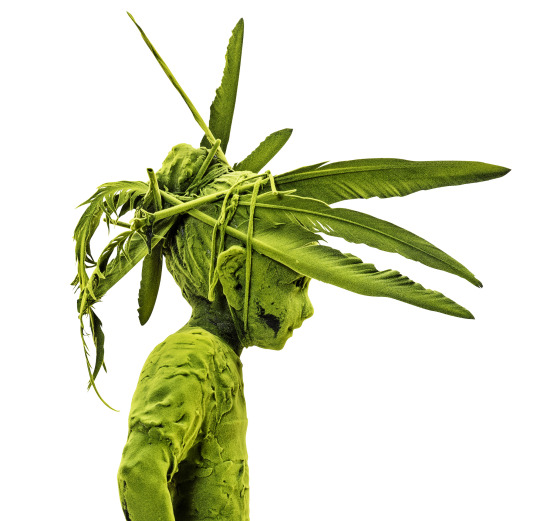
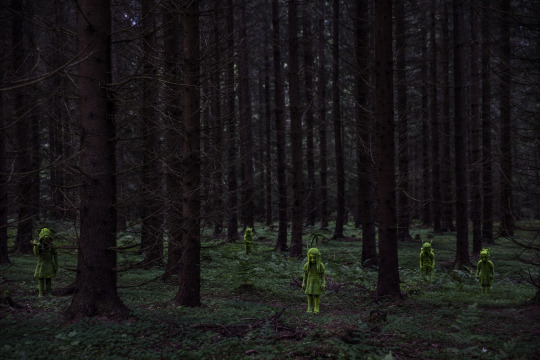
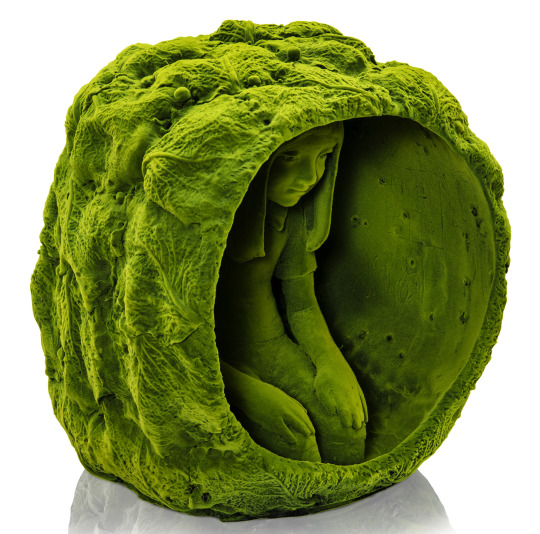
Mossy Figures Wander Through Woodlands and City Streets in Kim Simonsson’s Flocked Ceramic Sculptures
470 notes
·
View notes
Photo







Kim Simonsson
Moss people
#kim simonsson#sculptures#ceramic art#flocking#contemporary art#nordic folklore#finnish artist#green!
23 notes
·
View notes
Text
Estella and her mother were two of the many people who flocked to the palace, partly out of curiosity and partly out of a sense of duty. Well, the latter mainly applied to her mother, and she was there to be kept out of trouble. Since her older sister had married a traveling merchant from the Summer Isles, she could tell that her parents were raring to marry her off at the soonest possible opportunity. And if her grandfather hadn’t been so fond of her and wanted her to remain at home, she would most likely be a wife by now.
But she wasn’t, and instead she was staring, awestruck, at the many artworks and sculptures and colored glass, zellige tiles, and ceramic vases. Her interest in art had come recently but hard, and she was in heaven. She barely remembered her mother telling her to behave herself and not to go into the royal quarters — as if she wanted to come face-to-face with the terrifying crown prince! — as she wandered around, finally finding herself in the library. The smell of musty books filled her nose, and she took a deep breath, loving how it brought back memories of her own tiny library. Estella found a promising stack of art books, almost as if someone knew she was going to be there, and headed towards it before it started to tip over, sending the books crashing to the ground. “Oh no!” Thinking it was her fault, she hurried forward, reaching for one of the books.
Closed RP: Beauty and the Beast
It had been two months since the king’s passing—a moment that had not been a surprise to anyone. Sonim Labrynthia had been ailing for some time—how long exactly was hushed rumor only mentioned in the shady corners of the local pubs and taverns, but it was definitely noteworthy that he had stopped making public appearances nearly a year ago. But it had been two months, and now all the gossip was about the new monarch taking his place—the son none of the townsfolk had even seen or heard of in over twenty years.
The son he’d banished to a prison at birth.
How could one not gossip over such a turn of events—especially since none had seen the prince even since his father’s passing. The murmurings that he was truly as grotesque and monstrous returned in force, murmured in every alley and street way up to the castle gates—even as new servants and assistants were being ushered in with their families to live and work within the castle walls.
@siiinfully
22 notes
·
View notes
Photo
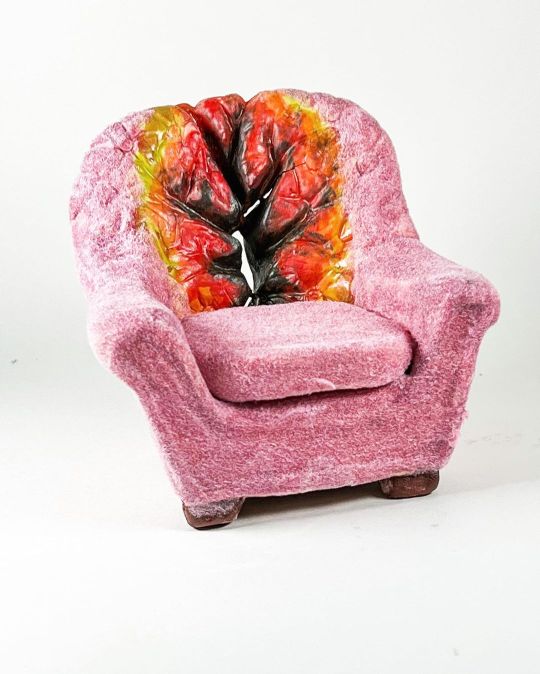
Fire Chair. Chair series. #ceramicchair #narrativeart #miniature #miniatureart #miniarturechair #flocking #flockingfabulous #flockingpowder #flockedceramic #chair #chairart #chairs #chairsofinstagram #chairswithstories #ceramics #ceramicart #ceramic #ceramicssculpture #ceramicart #claystagram #sculpture #sculptuteart #sculptorsofinstagram #sculpture_art #ceramicsculptureculture #ceramicsculptures #ceramicsculptureart #art #artwork #artoninstagram #artofinstagram (at Martha's Vineyard) https://www.instagram.com/p/CX_r95guDTP/?utm_medium=tumblr
#ceramicchair#narrativeart#miniature#miniatureart#miniarturechair#flocking#flockingfabulous#flockingpowder#flockedceramic#chair#chairart#chairs#chairsofinstagram#chairswithstories#ceramics#ceramicart#ceramic#ceramicssculpture#claystagram#sculpture#sculptuteart#sculptorsofinstagram#sculpture_art#ceramicsculptureculture#ceramicsculptures#ceramicsculptureart#art#artwork#artoninstagram#artofinstagram
0 notes
Photo

I finally got around to properly documenting this sculpture. Yesterday we installed a photo booth for art and sculpture on campus and it seems to be working. I made this about a year ago. #sculpture #art #form #ceramics #fuzzy #flocking #blue (at Southern Utah University) https://www.instagram.com/p/Bobt5kygNKO/?utm_source=ig_tumblr_share&igshid=1xbkgjerwhk1z
1 note
·
View note
Text
Chapter 6 of When the Lions Were Late is up!
[Read from the start]
[Link to Chapter 6]
I’ve put some “Fighter Profiles” and “Worker Profiles” under the cut for this post since I introduced quite a few ocs in this chapter (I have a lot of them for this story, and juggling all of them has been a bit of a challenge, but I hope you enjoy!)
CHARACTERS IN ORDER OF APPEARANCE
FIGHTER PROFILE: Suzuki Aiko (17)
Power: XXX
Speed: XX
Technique: XXXX
Range: XXX
A student at the Kokodan institute, Aiko is a levelheaded, somewhat sardonic teenager with a bit of a self-conscious streak that she’s working on overcoming. She loves animals and used to volunteer at zoos in the Before Times, as well as help her aunt take care of her flock of chickens.
FIGHTER PROFILE: Ojiro Takeshi (18)
Power: XXXX
Speed: XX
Technique: X
Range: XXX
A student at the Kokodan, Takeshi is a boisterous, bold young man with plenty of positivity to share with his friends. Confident and fun-loving, he can be a bit much for some people, but his friendship with the much quieter Masaru is going ten years strong. Takeshi has an interest in fashion and takes personal grooming very seriously.
FIGHTER PROFILE: Gyamfi Masaru (17)
Power: XXXX
Speed: XX
Technique: XXX
Range: XXX
A student at the Kokodan, Masaru is a gentle, sensitive soul who enjoys the quiet beauty of the world around him. Though he comes across as rather withdrawn, in reality he’s simply a bit shy around new people and rather soft spoken, meaning he tends to only speak when he feels its important. He has a fantastic singing voice.
WORKER PROFILE: Hayashi Haru (15)
Woodworking Skill: XXXXX
Competitiveness: XXXX
Stamina: XXX
A member of Hirosuo High’s crafting club, Haru specializes in woodworking and sculpture, though carving tools and devices for the Kingdom of Science with stone knives presents a bit of a learning curve. A cheerful, energetic personality, Haru is fiercely loyal to their friends. They can be surprisingly competitive when they’re presented with a new challenge.
WORKER PROFILE: Fujimoto Kokona (16)
Ceramics Skill: XXXXX
Sign Language Skill: XXXXX
Relaxing Skill: XX
A member of Hirosuo High’s crafting club, Kokona is most at home when working with clay and pottery. Graceful and elegant in appearance, Kokona is often mistaken for stoic and uptight, though her entire demeanor relaxes when she’s at the potter’s wheel. Kokona was homeschooled up until the last year of middle school, and struggled a bit with making friends in public school.
#dr stone#dr. stone#dcst#my writing#my fic#fanfiction#fanfic#dcst fanfic#my ocs#all of these characters have existed for QUITE a while#minor alterations for story purposes aside#I'm not kidding I have a whole google doc for the ocs for this one fic#au#aus#when the lions were late#no stone wars au
5 notes
·
View notes
Text
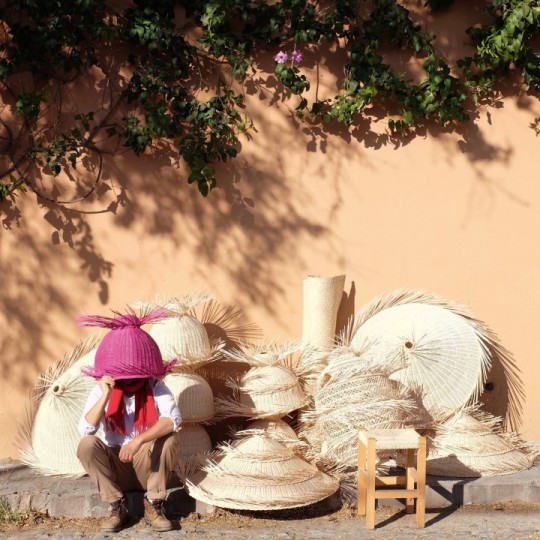
The history of artisanship in Mexico runs deep. Long before Europeans set foot in Central America, pre-Hispanic cultures were weaving, carving and moulding materials into everyday objects. It was once a country of many nations – from the Mayans in the Yucatán to the Aztecs in the Central Plateau – each with distinctive cultures, as well as their own advanced style of architecture and artisanship.
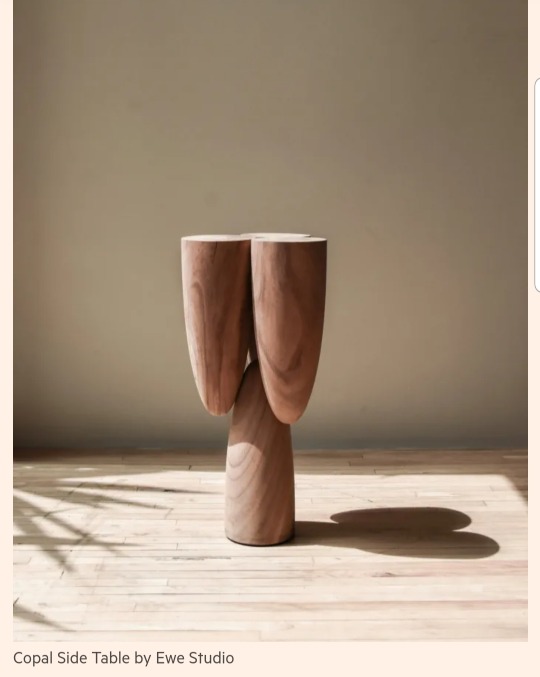
In recent years, Mexican designers have begun to look inward, acknowledging the wealth of talent and resources on their doorstep rather than from outside influences. Other creatives are joining them from overseas, flocking south in search of culture, skills and materials.
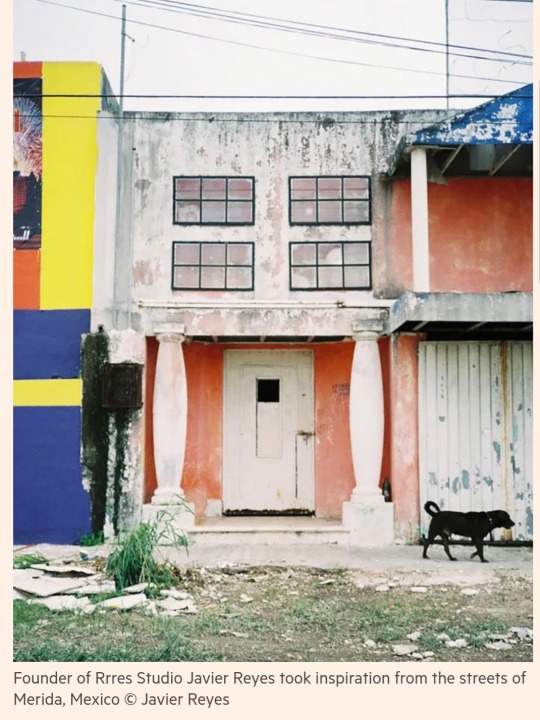
One such creative is French-born product and furniture designer Fabien Cappello, who, following a three-week holiday, uprooted his life in London (where he’d lived for eight years having studied at the RCA) to relocate to Mexico City, before moving west to Guadalajara. “I was just so struck by the culture,” he says of the life-changing experience. His work incorporates local resources and manufacturing. “There isn’t a city in the world with more metal workshops than Guadalajara,” he adds. “Repairing or making something specific to your needs in a very local way is a concept that is still relevant here.” His pieces incorporate traditional materials: from seats tightly woven in natural tule reed fibre to vintage chairs with geometric fabric. “Everything I wanted to develop in my design work is so present in Mexican materials. To understand more, I needed to participate.”
This focus on Mexican design heritage reflects a growing interest in its culture. Evidence of this can be seen in the success of chefs such as Enrique Olvera, who has opened a string of restaurants (including Cosme in New York City), casting a spotlight on what is arguably one of the world’s most historic, complex and creative cuisines. “There is more support for Mexico globally,” says Age Salajõe, a cofounder of Mexico City based Ewe design studio. This coincides with the general shift towards the artisanal, which has given Mexican designers a platform, while instilling a sense of pride and confidence in their cultural values. “We stopped caring about working on a stereotyped expression of our culture, and stopped developing design based on the expectation of what Mexico is for others,” Esrawe adds.
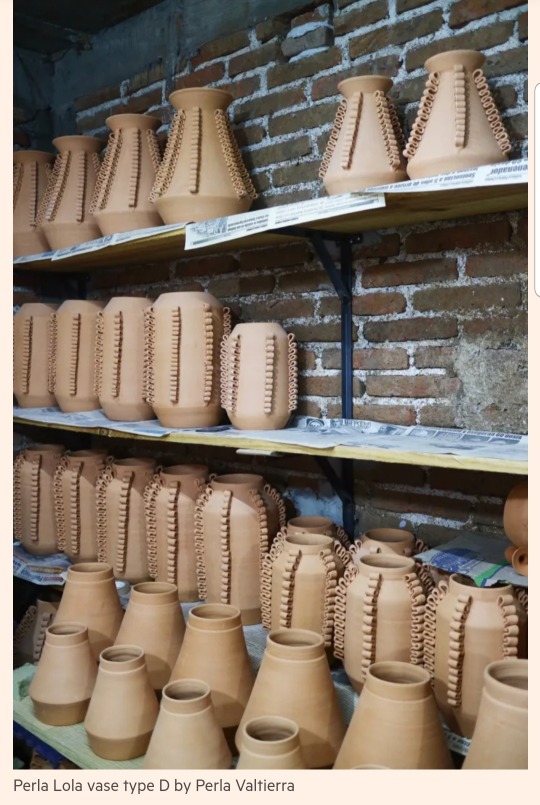
For many designers, the answer to the country’s design future lies in the past – and the skills passed down through generations, often in small rural communities. Many such skills risk being lost forever without timely intervention. Ceramicist Perla Valtierra turned her attention from industrial design to ceramics after participating in a craft and design program with a community in Zacatecas.
“I became aware of the possibilities we have in Mexico and realised how many people are out there making things across the country,” she says. She now produces ceramics with master craftsman Don Jesús Torres (whose skills were passed down to him from his father). Their pieces, hand-turned on the wheel, include tea cups and side plates with frilled rims and vases with rivet detailing. “The process is completely collaborative. We’re learning from each other,” says Valtierra, who sees a value not only in preserving these techniques but in creating a sustainable supply chain.
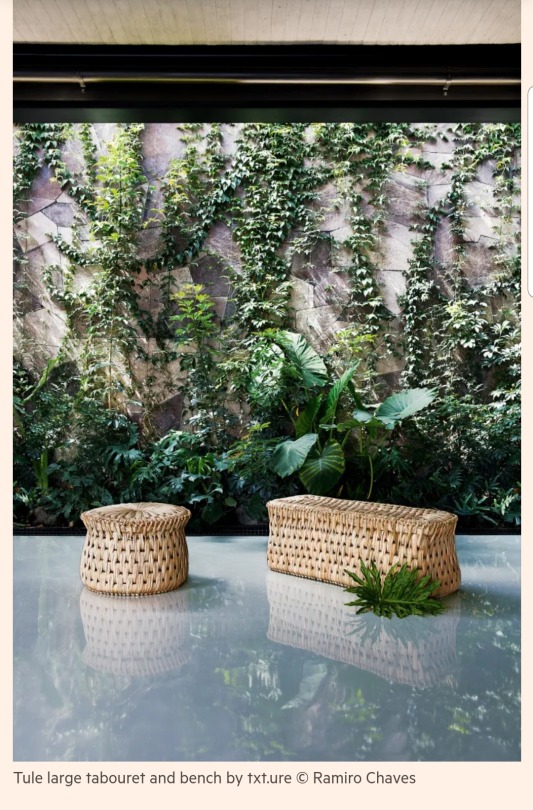
Establishing a sustainable infrastructure where artisans are empowered to work independently in their own social and cultural environments – while enabling them to thrive – is the impetus behind txt.ure, founded by Regina Pozo. The project aims to revive techniques and reinterpret objects, as well as create visibility and channels for distribution. Its signature piece is a tabouret stool woven from tule using an ancient weaving pattern. What makes it so special is that it embodies the idea of reinterpreting something old into the modern – in this instance that an item harking back to the Aztecs is just as relevant and desirable today.
Ewe Studio also fuses artisan heritage with new mediums, and collaborating with master craftsmen allows its designers to work with people they’ve long admired. “Sometimes they challenge us, sometimes we challenge them – it creates a mutual learning process,” says Esrawe. The result of this approach includes a Tikal green marble table hand-carved by stonemasons and a sculpture-like altar marble table inspired by religious rituals and ceremonies, bringing pre-Hispanic skills, materials and ideas into the 21st century.
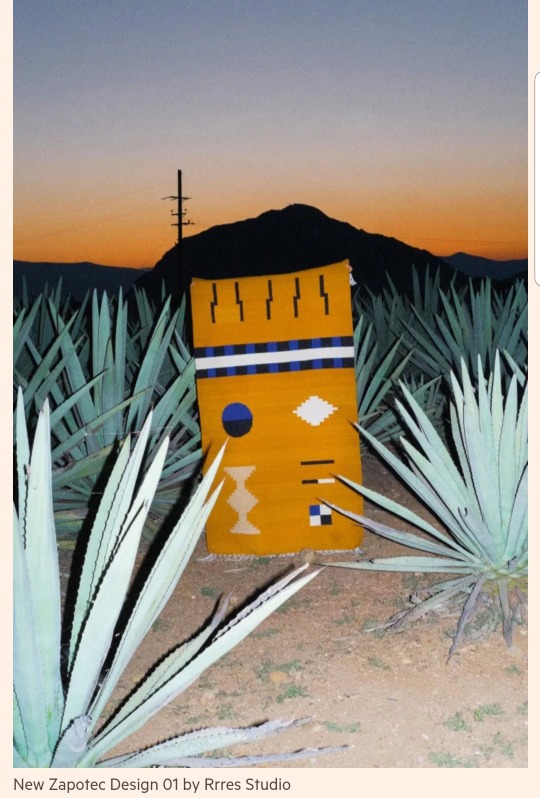
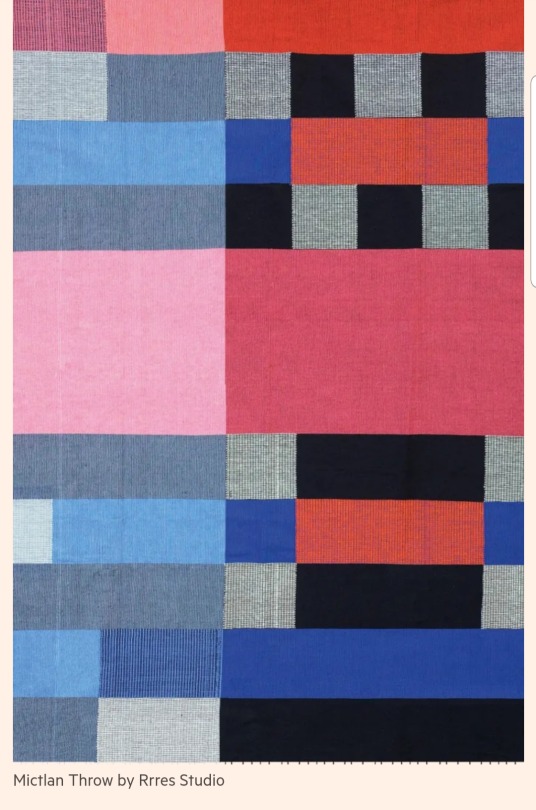
Collaboration is also key for Dominican-born designer Javier Reyes, founder of Rrres, which he has established in Oaxaca, Mexico. “Having something handmade is luxury,” he says of the renewed interest in heritage design and craftsmanship. He has sought out under-the-radar artisans, often without access to the resources needed to showcase their skills. His bright, geometric, hand-dyed rugs are made by Zapotec weavers while tall playful palm sculptures are crafted using a traditional weaving technique from Guerrero. It’s a collective effort.
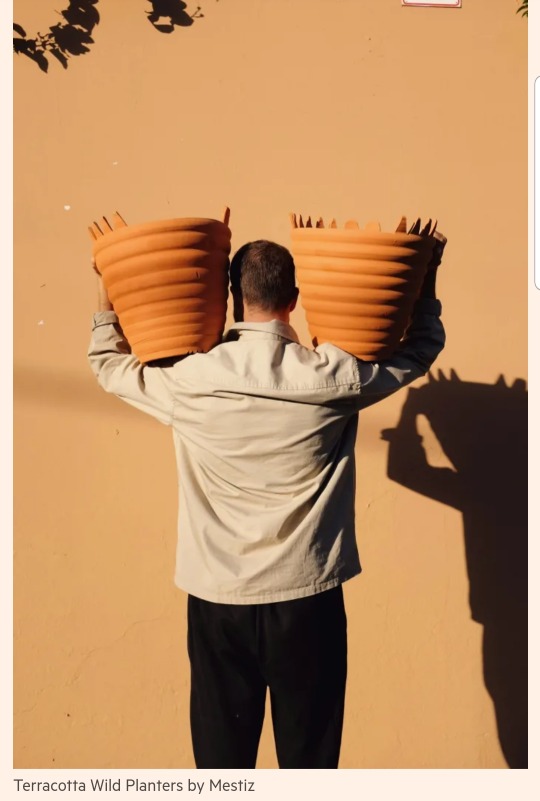
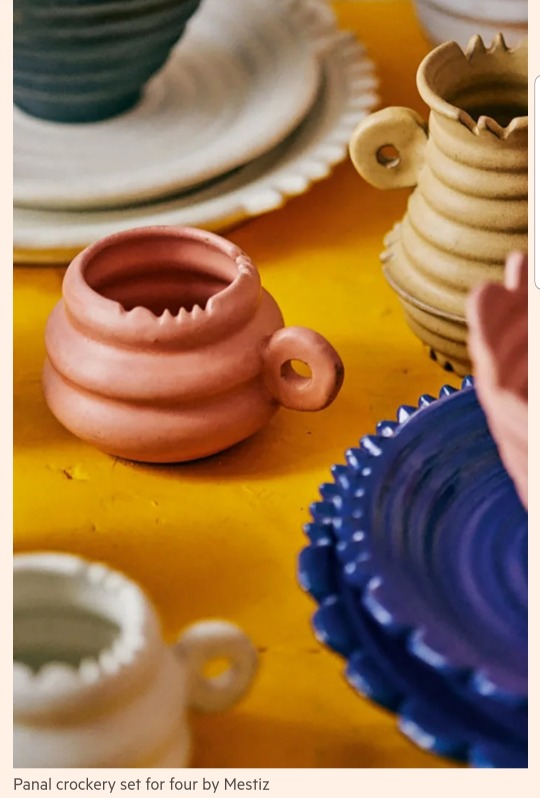
These distinctive designs embody the region in Mexico in which they were made. Even if you haven’t visited the country, they transport you there. “One of the things about craft-design is that you can tell a story of place,” agrees designer Daniel Valero of Mestiz. Born in Saltillo in the north of the country, Valero began collaborating with artisans to experiment with the traditional sarape weaving technique to create new textiles in 2014. He went full-time with his brand in 2018 and now works with makers across the country from Guanajuato to Bajio, creating ringed pottery in ultramarine, light pink chairs woven from palms by nomadic craftsmen and colour-blocked freeform wool rugs – pieces with a deep connection to the regions in which they originated. “I’m trying to continue the evolution of craft where it began,” Valero explains. “Someone has to do it, because everything that doesn’t evolve dies.”
As this new wave of creators shine a light on Mexico’s heritage, reviving techniques on the brink of extinction, the rest of the world has begun to take note – and the colourful, organic forms of Mexican design are set to be a big trend for 2021 and beyond. “Mexico has become a reference,” Esrawe concludes. “And as designers we’ve begun to look at who we are as a culture with pride.”
#mexico#indigenous#aztec#zapotec#france#london#europe#dominican republic#latin america#🇲🇽#new york#usa#united states
14 notes
·
View notes
Photo

A sculpture titled 'Zebra Lady (Zebra Stripes Decorated Nude Torso sculpture)' by sculptor Sara Ross. In a medium of Flocked Ceramic.
5 notes
·
View notes
Text

Nick Cave, A•mal•gams , 2020
"Last year, Cave began work on a new series of bronze statues, titled "A·mal·gams," which have become part of a new project, Soundsuits 2.0. The first statue is a seated figure with a human lower half decorated in floral tiles and an upper body that resembles a tree filled with ceramic bird sculptures. "A·mal·gams" is Cave’s response to a current debate: what should be done with the empty plinths where icons of slavery, racism and the Confederacy stood before being toppled by Black Lives Matter protesters? How can we turn these former reminders of hatred and pain into symbols of hope?
“My proposal is the tree of life,” says Cave. “A tree is a migration hub where flocks of birds come together collectively and nest within the structure.” In terms of its detail and exuberance, this new project is clearly a relative of the earlier incarnation of Cave’s Soundsuits, but the differences are clear: it’s not wearable and it doesn’t make a sound. But for Cave this isn’t a contradiction, more a natural progression."
-Nick Cave in an interview with Florian Obkircher for redbull from last summer.
11 notes
·
View notes
Text
INTRODUCTION TO BARCLEONA

The Casa de les Punxes or Casa Terradas, designed by Josep Puig i Cadafalch.

Casa Batlló - in the center of Barcelona. Designed by Antoni Gaudí. It is considered one of his masterpieces. A remodel of a previously built house, it was redesigned in 1904 by Gaudí and has been refurbished several times after that. The local name for the building is Casa dels ossos (House of Bones), as it has a visceral, skeletal organic quality.
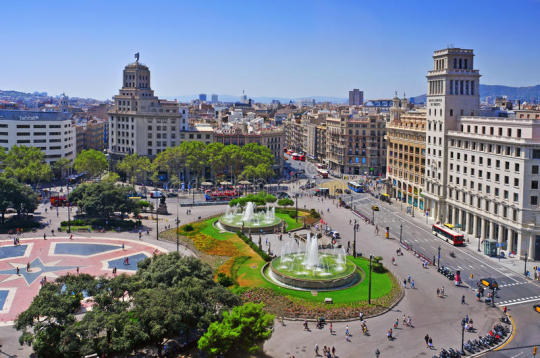
Plaça Catalunya - The plaza occupies an area of about 50,000 square metres. It is especially known for its fountains and statues, its proximity to some of Barcelona's most popular attractions, and the flocks of pigeons that gather in the centre.

La Rambla - is a street in central Barcelona. A tree-lined pedestrian street, it stretches for 1.2 kilometres connecting Plaça de Catalunya in the centre with the Christopher Columbus Monument at Port Vell.
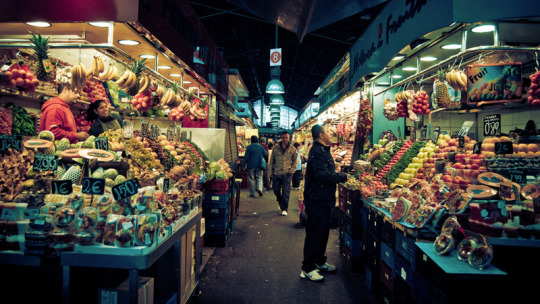
La Boqueria food market - is a large public market in the Ciudad Vieja district of Barcelona, Catalonia, Spain, and one of the city's foremost tourist landmarks, with an entrance from La Rambla, not far from the Liceo, Barcelona's opera house.

Gothic Quarter - The charming Gothic Quarter, or Barri Gòtic, has narrow medieval streets filled with trendy bars, clubs and Catalan restaurants. The Museu d'Història de Barcelona shows remains of the Roman city. Artisans sell leather and jewellery near the Cathedral of Barcelona, while flower stalls and street-food vendors line busy avenue La Rambla. The Plaça del Pi, named after the adjacent Gothic church, hosts a weekend art market.
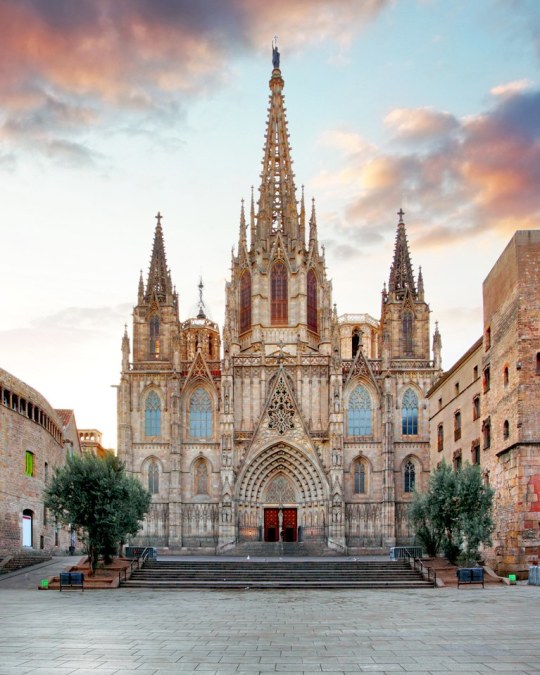
Barcelona Cathedral - The Cathedral of the Holy Cross and Saint Eulalia, also known as Barcelona Cathedral, is the Gothic cathedral and seat of the Archbishop of Barcelona, Catalonia, Spain. The cathedral was constructed from the thirteenth to fifteenth centuries, with the principal work done in the fourteenth century.

Basilica of Santa Maria del Mar - is a church in the Ribera district of Barcelona, Spain, built between 1329 and 1383 at the height of Principality of Catalonia's maritime and mercantile preeminence. It is an outstanding example of Catalan Gothic, with a purity and unity of style that is very unusual in large medieval buildings.
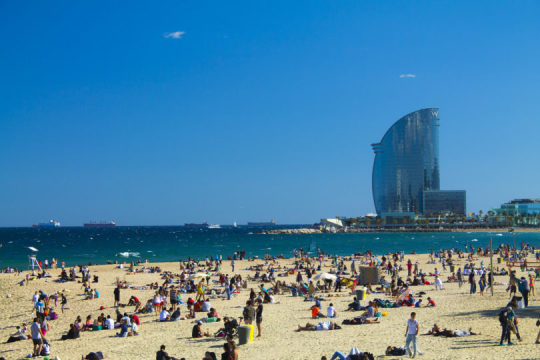
Beach

Park Güell - is a public park system composed of gardens and architectonic elements located on Carmel Hill, in Barcelona, Catalonia, Spain. Park Güell is the reflection of Gaudí's artistic plenitude, which belongs to his naturalist phase. During this period, the architect perfected his personal style through inspiration from organic shapes.
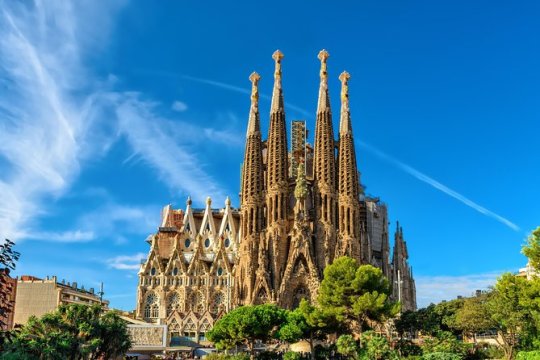


La Sagrada Familia - is a large unfinished Roman Catholic minor basilica in Barcelona, Catalonia, Spain. Designed by Catalan architect Antoni Gaudí. On 19 March 1882, construction of the Sagrada Família began under architect Francisco de Paula del Villar. In 1883, when Villar resigned, Gaudí took over as chief architect, transforming the project with his architectural and engineering style, combining Gothic and curvilinear Art Nouveau forms.
Gaudí devoted the remainder of his life to the project, and he is buried in the crypt. At the time of his death in 1926, less than a quarter of the project was complete. Relying solely on private donations, the Sagrada Família's construction progressed slowly and was interrupted by the Spanish Civil War. In July 1936, revolutionaries set fire to the crypt and broke their way into the workshop, partially destroying Gaudí's original plans, drawings and plaster models, which led to 16 years work to piece together the fragments of the master model.

Casa Milà - popularly known as La Pedrera or "The stone quarry", a reference to its unconventional rough-hewn appearance, is a modernist building. It was the last private residence designed by architect Antoni Gaudí and was built between 1906 and 1912. The building was commissioned in 1906 by Pere Milà [ca; es] and his wife Roser Segimon [ca; es]. At the time, it was controversial because of its undulating stone facade, twisting wrought iron balconies and designed by Josep Maria Jujol. Several structural innovations include a self-supporting stone façade, and a free-plan floor, underground garage and the spectacular terrace on the roof.

Fundació Joan Miró - is a museum of modern art honoring Joan Miró. His connection to the land and his interest in everyday objects and in the natural environment formed the backdrop to some of his technical and formal research. Self-contained in his manners and public expressions, it is through art that Joan Miró showed his rebelliousness and a strong sensitivity to the political and social events around him.
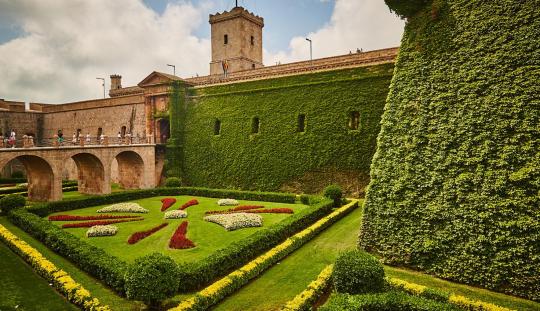
Montjuïc Castle - is an old military fortress, with roots dating back from 1640. In the last 350 years Montjuïc Castle has played a decisive role in the history of Barcelona, becoming a symbol after the Catalan defeat to Spain in 1714. Since then the Montjuïc cannons have bombarded the city and its citizens on various occasions, and Montjuïc has been used as a prison and torture centre repeatedly for three centuries.The castle is infamous in Catalan history books because of its role in the civil war from 1936 to 1939 when both sides of the conflict imprisoned, tortured and shot political prisoners at Montjuïc, among them Lluís Companys, who was the president of the Generalitat of Catalonia during the Spanish Civil War. Companys was executed upon orders from the Spanish State at Montjuïc Castle in 1940.

Barcelona Pavilion - designed by Ludwig Mies van der Rohe and Lilly Reich, was the German Pavilion for the 1929 International Exposition in Barcelona, Spain. The pavilion for the International Exhibition was supposed to represent the new Weimar Germany: democratic, culturally progressive, prospering, and thoroughly pacifist; a self-portrait through architecture.

Jardí Botànic de Barcelona (Botanic Garden) - set amongst a number of stadiums used in the Summer Olympic Games of 1992. Although a botanical garden had been established in Barcelona as early as 1888, the current gardens date from 1999. “After only a few minutes of walking around the Botanic Gardens I felt I had entered a Zen monastery, calm and peace and cleanliness.”

Bibliotec Sant Antoni (Joan Oliver) - The library, named in honor of playwright and poet Joan Oliver, came about through a competition won by RCR in 2005. The architects sought to make the street more dynamic and to open up the inner courtyard for public use, as well as to create a library. The glass-enclosed main reading room is raised up and set between the two lateral wings of the library, which allow light to filter through from both sides, forming a gateway into the public space. This courtyard, with its trees, earthen paving, sitting areas, games, etc. can be understood as an extension of the library’s reading rooms.
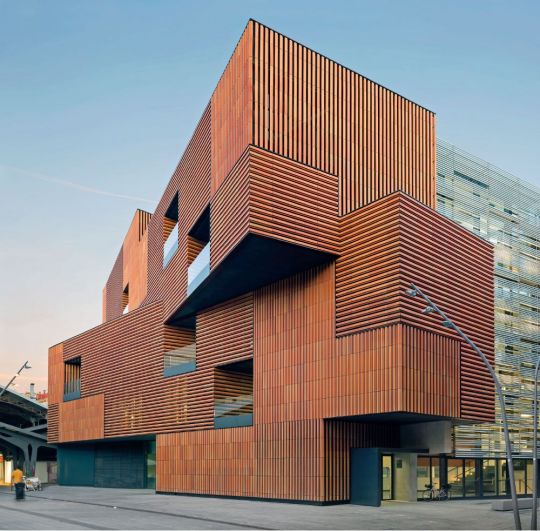
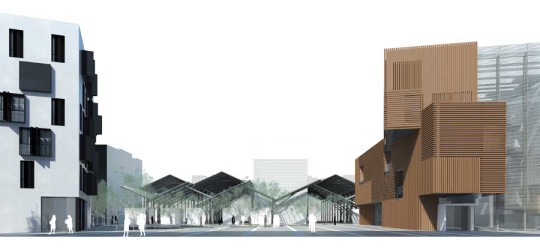
Plaza de la Gardunya - Escuela Massana (school of Art and Design) is part of the long process of urban transformation of Plaza de la Gardunya, located in Barcelona’s historical centre. the effort put into this project responds to the desire of creating a bright interior space with open connecting spaces whilst, at the same time, the exterior of the building remains in harmony with the urban fabric. The building showcases different volumetries and façade textures as a response to the surrounding buildings. With the aim of giving it a more unique and sculptural look and, at the same time, make it more airy, the section that faces onto the square is divided into two sections slightly rotated, creating terraces. The school, which is an institution that welcomes future artisans and designers, is clad in a ceramic material of large dimensions, made in an artisanal manner and unique to our building. This helped to give it its unique character and highlights the sculptural nature of the building, whilst protecting the privacy of the students.
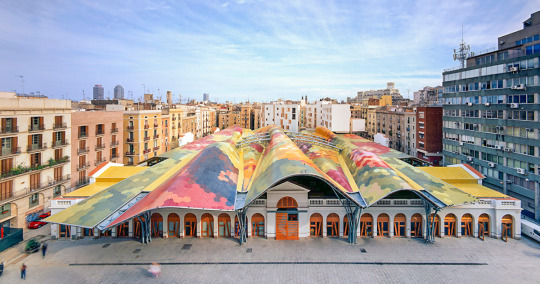
Santa Caterina Food Market - Buzzy market featuring a unique, wavy roof & colourful mosaics, with a variety of vendors & eateries. A competition was opened to restore the Santa Caterina city market located in the old quarter of Barcelona in 1997. EMBT won the bid with a proposal that aimed at incorporating the extreme complexity of the setting itself by creating a commercial market complemented by a residential zone and public spaces that integrated all the activities of the neighbourhood.
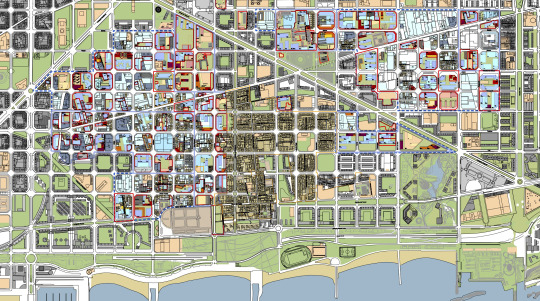
22@ District - is the corporative name given to an urban renewal area in Barcelona's formerly industrial area of Poblenou, in the district of Sant Martí, nicknamed "the Catalan Manchester" in the 19th century. Its aim is to convert Poblenou into the city's technological and innovation district, as well as to increase leisure and residential spaces. Centered on Plaça de les Glòries Catalanes, it is part of one of Europe's biggest urban regeneration schemes, begun during the 2000s and still ongoing.

The Museu del Disseny de Barcelona - is a new center of Barcelona's Institute of Culture, acting as a museum and laboratory. It focuses on 4 branches or design disciplines: space design, product design, information design and fashion. Barcelona is a city historically linked to design. It was decided to build a single space in which locate all collections and endowments existing in Barcelona related to the world of design, and Oriol Bohigas commissioned the construction of a building in the Plaça de les Glòries.

Torre Glòries - is a 38-story skyscraper which marks the gateway to the new technological district of Barcelona. It was designed by French architect Jean Nouvel in association with the Spanish firm b720 Fermín Vázquez Arquitectos and built by Dragados. Torre Agbar is intended to recall the shape of a geyser rising into the air. It was inspired by Montserrat, a mountain near Barcelona. In an interview, he described the tower as having a phallic character.

Edifici Mediatic - Enric Ruiz-Geli doesn’t emphasise the media impact of his futuristic building, but instead its energy efficiency. Extensive studies formed the basis for the parametric design where the award-winning steel frame is on the outside and the interior offers flexible use of space. The patented cushions made of ETFE membranes are controllable, allowing the different façades to be insulated, opened, or shaded as needed. Edifici MediaTIC is a prime example of forward-looking architecture.
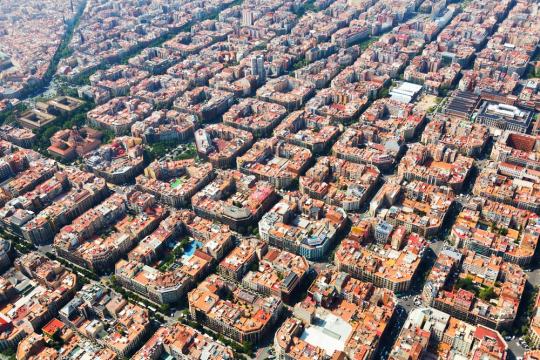
Urban Superblocks - Barcelona’s radical plan to take back streets from cars. A vision for a different way of living in the 21st century, one that steps back from many of the mistakes of the auto-besotted 20th century, refocusing on health and community. It is a bigger and more ambitious city plan than anything being discussed in America and, more important, a plan that is actually being implemented, with a few solid pilot projects behind it, a list of lessons learned, and a half-dozen new projects in the works.
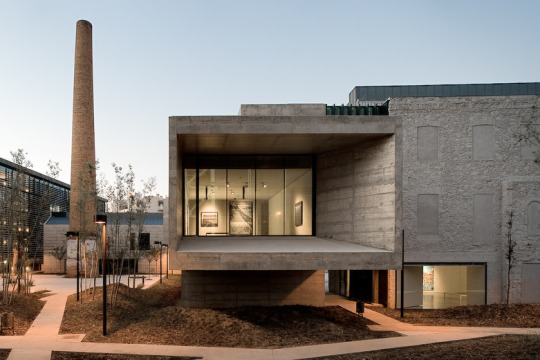
Can Framis Museum - Is an art center devoted to the promotion of contemporary Catalan painting. Located in the old Can Framis factory complex, the museum displays more than 250 paintings from the sixties to the present made by artists born or currently living in Catalonia.
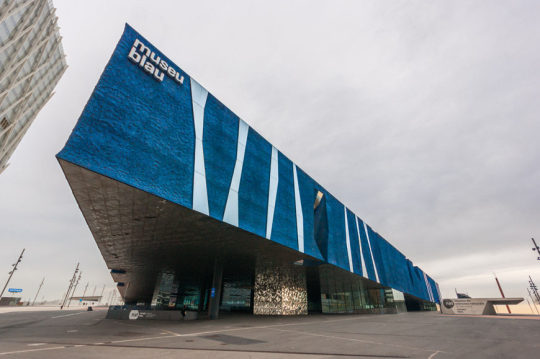
Museu Blau (Science Museum) – By Herzon De Meuron “We look for materials which are as intelligent, versatile and complex as natural phenomena, in other words materials which don't just appeal to the eyes of the astounded art critic, but are also really efficient and appeal to all our senses.” – Jacques Herzog. A triangular mass of gray-blue concrete punctured and split in places to reveal the contrasting use of reflective planes.
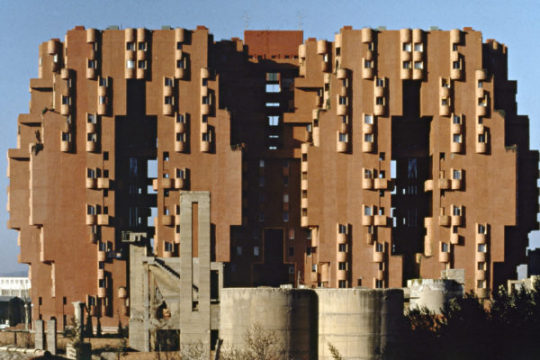

Walden 7 - is an apartment building designed by Ricardo Bofill's team and located close to Barcelona, in Catalonia. It was built in 1975. The original project includes 446 residences. The original exterior façade was covered with small, red ceramic tiles backed with the wrong adhesive, creating a pedestrian hazard as the tiles fell off the building.
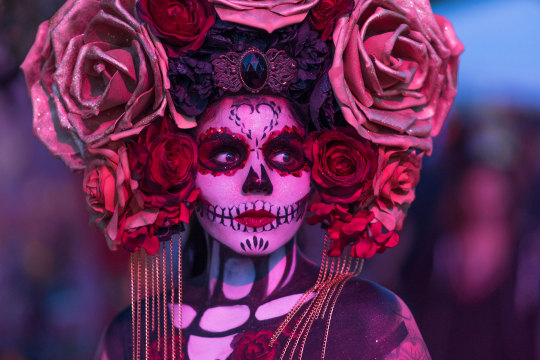
The day of the Dead - is a Mexican holiday celebrated throughout Mexico, and by people of Mexican heritage elsewhere. The holiday involves family and friends gathering to pray for and remember friends and family members who have died, and helping support their spiritual journey. In Mexican culture, death is viewed as a natural part of the human cycle. Mexicans view it not as a day of sadness but as a day of celebration because their loved ones awake and celebrate with them. Mexican cempasúchil (marigold) is the traditional flower used to honor the dead.

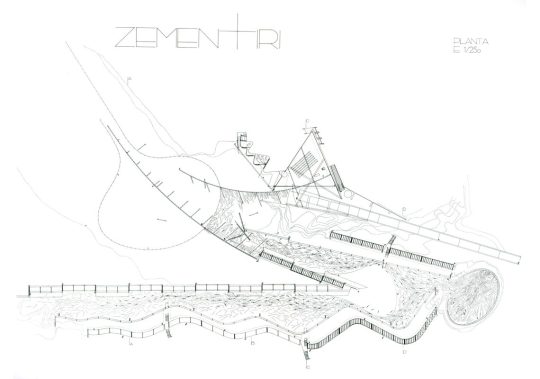
Igualada Cemetery - Designed by the architects Enric Miralles and Carme Pinós after winning an architectural competition in 1984. the cemetery became widely regarded as one of the most poetic works of twentieth century Catalan architecture. to explore poetic ideas regarding the acceptance of the cycle of life to enable a link between the past, the present, and the future. A processional "street" descends from the entrance, where crossed, rusting, steel poles doubling as gates and likened to the crosses at Calvary, proclaim the start of a winding pathway towards the burial area. The route is lined with repeatable concrete loculi forming retaining walls and the floor of the path has railway sleepers set into its concrete surface.The intention was to bring the bereaved down into the landscape to a 'city of the dead', an in between place where the dead and the living are brought closer together. The spaces are designed to provoke thoughts and memories.
5 notes
·
View notes
Photo




Ariel Bowman's amazing sculpture, "La Grande Odalisque" [Ceramic, brass, flocking, and wood, 8''h x 16''w x 12''d] for the Beautiful Bizarre Art Prize exhibition "Representational Modern" currently on view at Modern Eden Gallery through till 1 February . To enquire about this work please email Gallery Director, Kim Larson at [email protected] . . .
#beautifulbizarremagazine #artmagazine #beautifulbizarreartprize #newcontemporaryart #contemporaryart #art #modernedengallery #representationalmodern #ArielBowman #sculpture #figurativesculpture
11 notes
·
View notes